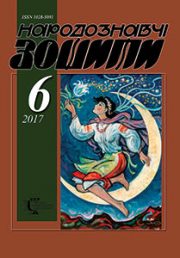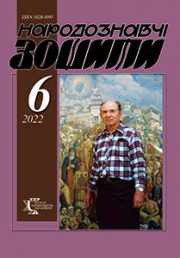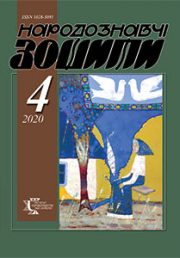The Ethnology Notebooks. 2022. № 1 (163), 80—86
UDK 75.056:655.3.066.11-053.4/.6″2000/2010″
DOI https://doi.org/10.15407/nz2022.01.080
MAYOVETS Andriy
- ORCID ID: https://orcid.org/0000-0003-3311-9350
- postgraduate student,
- Lviv National Academy of Arts,
- 38, Kubiyovycha Street, 79011, Lviv, Ukraine,
- Contacts: e-mail: andriy.mayovets@gmail.com
Abstract. The article analyzes the experience of some illustrators, graduates of the Lviv National Academy of Arts, whose creative program has developed since the beginning of the XXI century. There are common features of professional criteria of artists working on publishing projects for children: general approaches to solving the system «author — text — vision», stylistics, metaphorical and plastic imagery, interpretation of elements of ethnic tradition and modern design technologies.
The aim of the article is to analyze the conceptual approaches of a group of modern illustrators of children’s publications, which were formed in a common educational environment — in LNAM.
The rich factual material examines the multiplicity of authorial approaches to the interpretation of classical literary forms or innovations in different versions of the aesthetics of modern book graphics. Graduates of the Department of Graphic Design, as well as other departments of LNAM, cooperate with various publishers, including «Kamenyar», «Apriori», «Old Lion Publishing House», «Svichado», «Svit», implementing original formal ideas.
The relevance of the article is that for the first time the typology of the basic principles of solving spatial illustration complexes, which belong to the characteristic features of Lviv academic professional art education features of decorative interpretation of plastic form and appeal to folk tradition. In addition, examples of other ways of compositional organization of sheets with illustrations of children’s publications are considered. The most interesting representatives of such aesthetics with the so-called «associative chains» are Romana Romanyshyn and Andriy Lesiv, who work in the family creative workshop «Agrafka».
The object of research is the works of graphics of children’s publications of Ukrainian publishers, which specialize, among others, in the production of books for children. The subject of the research is figurative and expressive means of illustrators of Ukrainian children’s publications of 2000—2010.
Keywords: graphics, computer graphics, illustration, children’s book, graphic artists, graduates of the Lviv National Academy of Arts (LNAM), artistic style, composition, vector and raster technique, style, design, software, layout, «magical realism», ethnic tradition, plastic metaphor.
Received 11.01.2022
REFERENCES
- (2018). Lviv National Academy of Arts. LNAM. Retrieved from: http://www.lnam.edu.ua/ [in Ukrainian].
- Sidorenko, V. (2008). Visual art from avant-garde shifts to the latest trends: Development of visual art of Ukraine in the XX—XXI centuries. Institute of Contemporary Problems. of the city Academic city of Ukraine. Kyiv: VH [studio] [in Ukrainian].
- Slavova, M. (2001). Children’s book: on the road or in a dead end? On its current socio-cultural state. Library Planet, 1, 38—39 [in Ukrainian].
- Yatsiv, R. (2007). Modern accident of artistic Lviv. Fine Arts, 2, 10—11 [in Ukrainian].
- Melnyk, O. (2015). Computer graphics in modern book illustration: problems of technique and style. Scientific notes. Series: Art History, 1, 157—161 [in Ukrainian].
- (2019). Bukvoid. Culture. Retrieved from: http://bukvoid.com.ua/events/culture/2014/05/16/073736.html [in Ukrainian].
- (2019). Zografos. Illustrations. Retrieved from: http://zografos.org.ua/ illustrations.html [in Ukrainian].
- (2017). Old Lion Publishing House. Retrieved from: http://starylev.com.ua /index.php? route = site / authors / view & author_id = 155 [in Ukrainian].
- (2019). The artist as a co-author. Litakcent. Retrieved from: http://litakcent. com / 2011/09/13 / hudozhnyk-jak-spivavtor / [in Ukrainian].
- Balutska, L. Ukrainian children’s book: problems of quantity and quality the future is created in childhood. PROCEDURE. MHTML document. Retrieved from: http://postup.brama.com/usual.php?what = 64152 [in Ukrainian].
- Ogar, E. (2002). Culture of modern children’s books. Publishing industry and personnel: achievements, problems, prospects: Scientific practice. coll (P. 138—147). Lviv: Az-Art [in Ukrainian].
- Teslenko, I. (2013). Children’s book: will Ukraine degrade or break through? IA ZIK. Retrieved from: http://zik.ua/ua/news/2013/05/11/406820 [in Ukrainian].







